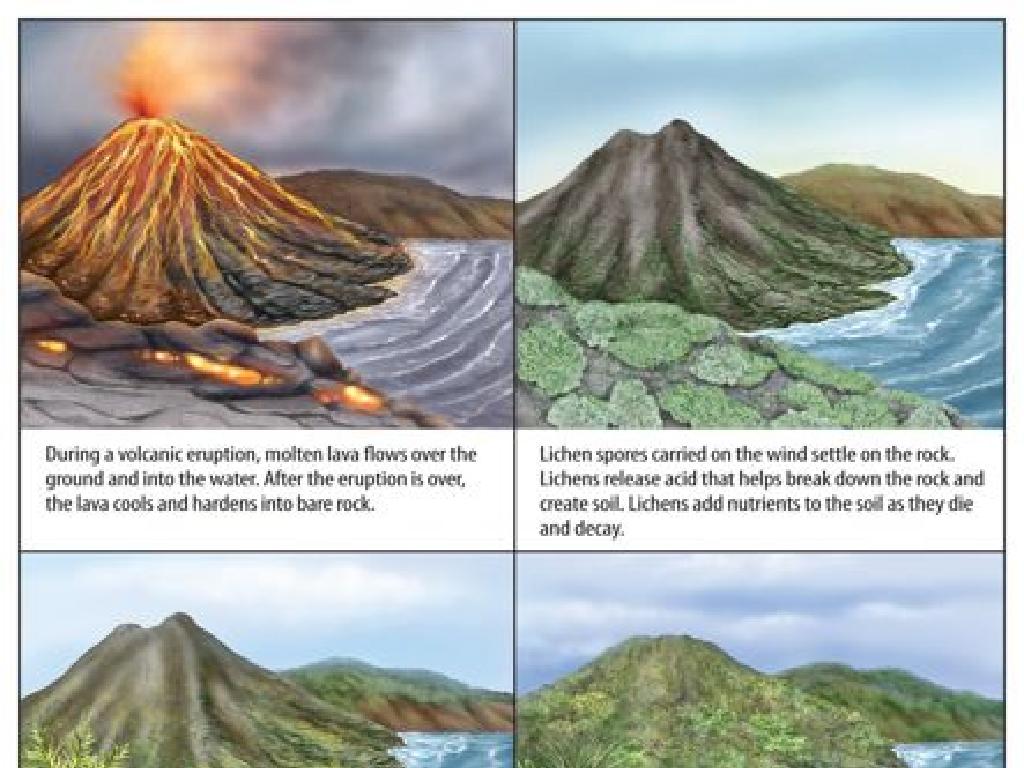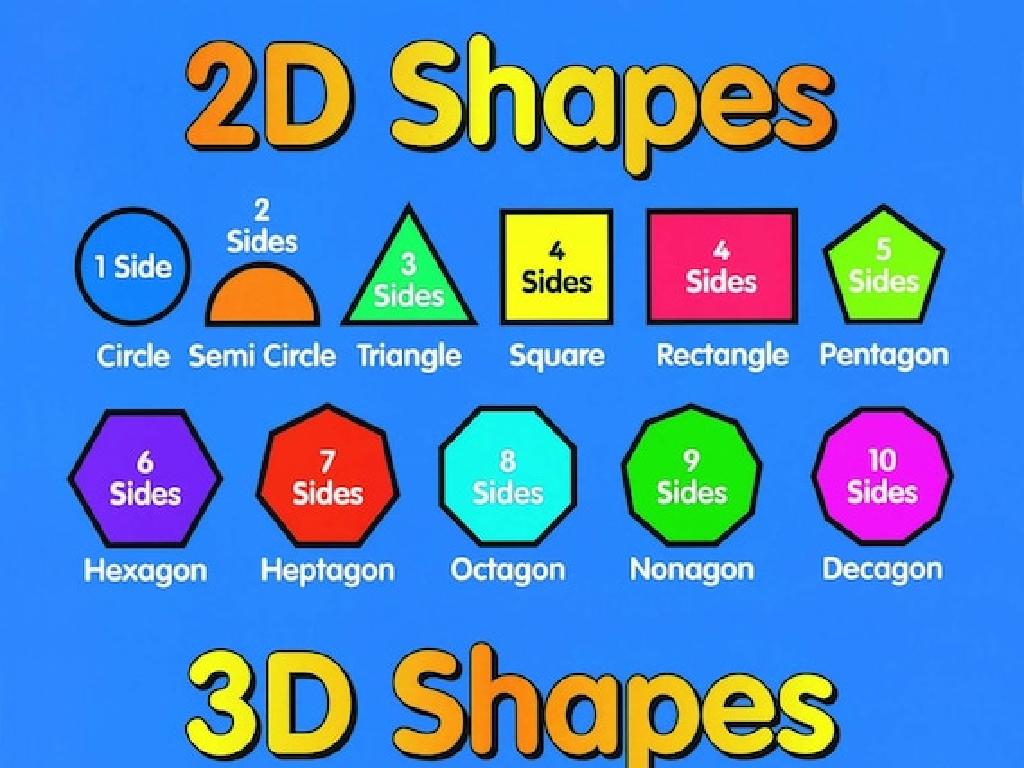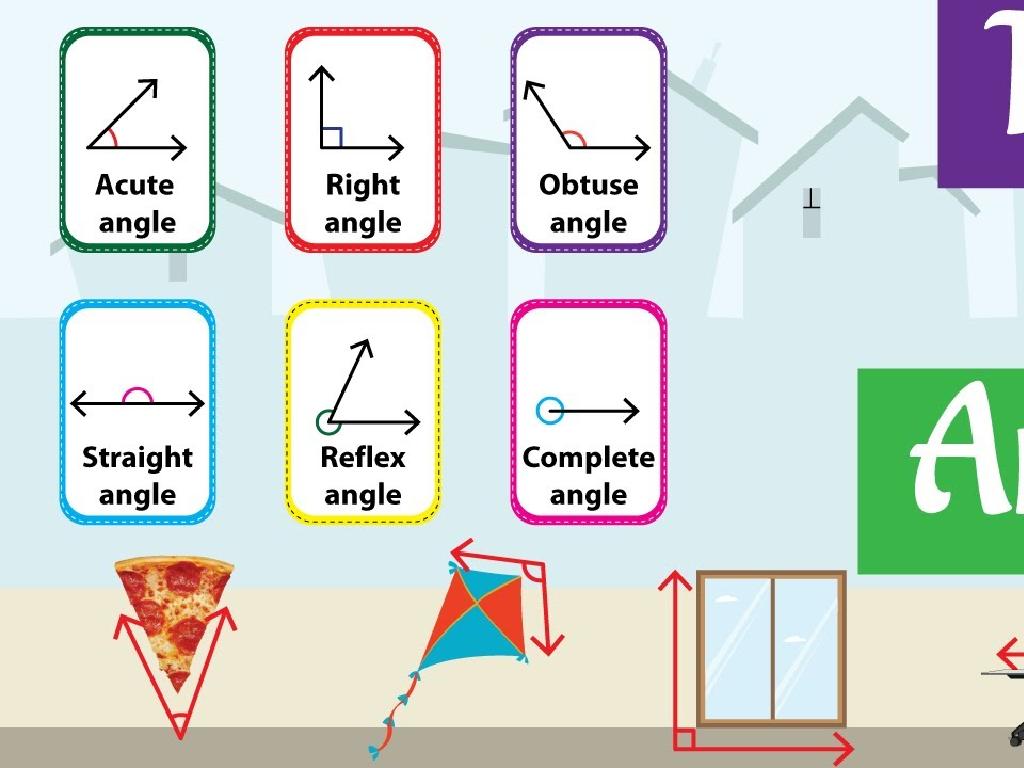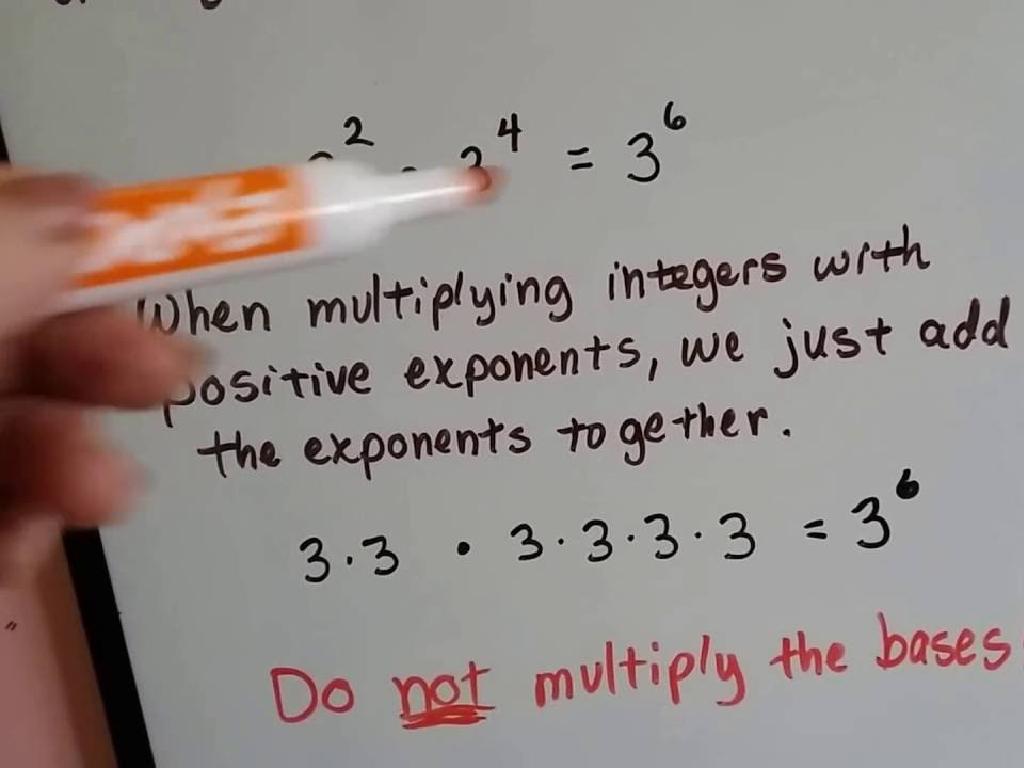Compare Amplitudes And Wavelengths Of Waves
Subject: Science
Grade: Fourth grade
Topic: Force And Motion
Please LOG IN to download the presentation. Access is available to registered users only.
View More Content
Exploring Waves: Amplitude & Wavelength
– Waves: Ups and downs
– Amplitude: Wave’s height
– How tall the wave is from the middle to the top
– Wavelength: Wave’s stretch
– Distance from one wave peak to the next
– Observing waves around us
– Look at water waves or sound waves in music
|
Begin the lesson by explaining that waves are like the ups and downs on a roller coaster. Introduce amplitude as the height of the wave from its resting position to the top of the crest. Explain wavelength as the distance from one peak of the wave to the next. Use real-world examples such as ocean waves to illustrate amplitude and the distance between each wave to explain wavelength. Encourage students to observe waves they come across in daily life, like the ripples in a pond or the waves they see when they drop a stone in water. This will help them understand the concepts of amplitude and wavelength in a tangible way.
Exploring Waves: Types and Examples
– What is a wave?
– A wave carries energy from one place to another.
– Different types of waves
– Sound waves, water waves, light waves.
– Waves we see and hear daily
– Music from instruments, ocean waves, radio signals.
– Understanding wave properties
|
Begin the lesson by defining a wave as a way to transfer energy from one place to another without moving the object itself. Explain that there are different types of waves, such as sound waves, water waves, and light waves, each with unique characteristics. Provide relatable examples of waves in everyday life, like the sound of music, the waves in the ocean, and the radio signals that carry music and news. Emphasize that understanding the properties of waves, such as amplitude and wavelength, is key to understanding how they work and affect the world around us. Encourage students to think of other examples of waves they encounter every day.
Exploring the Parts of a Wave
– Identify wave’s crest and trough
– Crest is the top of a wave, like the peak of a mountain
– Crests: the wave’s high points
– Trough is the bottom of a wave, like the bottom of a valley
– Troughs: the wave’s low points
– Wavelength and amplitude
– Wavelength is the distance from crest to crest, and amplitude is the wave’s height
|
This slide introduces students to the basic parts of a wave, which is a fundamental concept in understanding wave behavior. The crest is the highest point of the wave, while the trough is the lowest point, analogous to peaks and valleys in a landscape. Emphasize that the wavelength is the distance between two consecutive crests or troughs, which can be measured in units like meters. Amplitude is the height of the wave from its resting position to the crest, which determines the wave’s strength or intensity. Use real-life examples such as ocean waves to illustrate these concepts. Encourage students to visualize waves in a physical context to better grasp these abstract ideas.
Exploring Wave Amplitude
– Amplitude: Wave’s height
– Amplitude is the height from the middle to the top of a wave
– Loud vs. Soft: Amplitude’s role
– Loud sounds have high amplitude, soft sounds have low amplitude
– Real-life: Whisper vs. Shout
– Whispering shows low amplitude, shouting shows high amplitude
– Measuring Amplitude
– Use a ruler to measure the height of waves in a diagram
|
This slide introduces the concept of amplitude in waves and its practical implications in everyday life. Amplitude is the measure from the rest position to the crest of the wave, which determines the power or intensity of the wave. For instance, in sound waves, amplitude affects volume; a whisper has a low amplitude while a shout has a high amplitude. Encourage students to think of examples where they experience different amplitudes in their daily lives, such as listening to music at different volumes. A class activity could involve measuring the amplitude of waves drawn on paper using a ruler, helping students visualize and understand the concept of amplitude.
Exploring Wavelengths of Waves
– What is a wavelength?
– The distance from one wave crest to the next.
– Comparing short and long wavelengths
– Short wavelengths have more waves in a space than long wavelengths.
– High pitch and low pitch sounds
– High pitch sounds have short wavelengths, while low pitch sounds have long wavelengths.
– Observing wavelength in real life
– Think of the difference between a whistle and a drum.
|
This slide introduces the concept of wavelength as a key characteristic of waves in the context of sound. Wavelength is the distance between consecutive crests of a wave, which can be thought of as the ‘size’ of the wave. Short wavelengths mean that the waves are closer together and typically have a higher frequency, which is perceived as a high pitch. Conversely, long wavelengths mean the waves are further apart, have a lower frequency, and create a low pitch. Use everyday examples like musical instruments to illustrate the difference in wavelengths. Encourage students to think of other examples of high and low pitch sounds they encounter in their daily lives.
Comparing Amplitude and Wavelength
– Amplitude vs. Wavelength impact
– Amplitude is wave height; wavelength is wave length. They are independent properties.
– Demonstrating wave differences
– Use visuals like wave drawings to show high and low amplitude and long and short wavelengths.
– Slinky as a wave model
– Stretch a slinky to see how waves travel and change with different stretches.
– Interactive wave exploration
|
This slide aims to help students understand the concepts of amplitude and wavelength and how they are distinct aspects of waves. Amplitude refers to the height of the wave from its rest position, while wavelength is the distance between two consecutive similar points on the wave, like crest to crest. It’s crucial to convey that these properties do not affect each other; a wave can have high amplitude and short wavelength or any other combination. Use visual aids like diagrams to illustrate these differences clearly. The slinky activity will provide a hands-on experience, allowing students to visualize and interact with wave properties by stretching and compressing a slinky to simulate different amplitudes and wavelengths. Encourage students to observe and describe how the waves change as they modify the slinky’s stretch.
Amplitude and Energy
– Higher amplitude equals more energy
– Like a louder sound or a bigger wave has more energy
– Examples: loud sounds, big waves
– Think of a whisper vs. a shout, or a ripple vs. a tsunami
– Activity: Clapping hands softly vs loudly
– Compare the sound of a soft clap to a loud clap
|
This slide introduces the concept of amplitude in relation to energy. Explain that amplitude is the height of the wave and the greater the amplitude, the more energy the wave carries. Use everyday examples such as the difference between loud and soft sounds, or small ripples versus large ocean waves, to illustrate the point. For the activity, have students clap their hands softly first and then loudly, noticing the difference in sound produced, which correlates to the amount of energy used. This will help them understand that the louder sound (higher amplitude) is a result of more energy being transferred to the air. Encourage students to observe and discuss the differences they notice during the activity.
Wavelength and Frequency
– Shorter wavelength, higher frequency
– Waves closer together have more cycles per second
– Compare blue and red light
– Blue light waves are shorter than red light waves
– Activity: Wave-making with rope
– Create waves in a rope to see wavelength and frequency in action
– Understanding wave properties
|
This slide introduces the concept of wavelength and frequency, explaining that waves with shorter wavelengths have higher frequencies. Use examples like blue and red light to illustrate this point, as blue light has a shorter wavelength and higher frequency compared to red light. The class activity involves students using a rope to create waves, allowing them to visually grasp the concept of wavelength and frequency. Teachers should prepare to explain how to safely perform the rope activity, ensuring each student has a chance to participate. Possible variations include changing the speed of the wave, the length of the rope, or the tension to show how these factors affect wavelength and frequency.
Class Activity: Wave Exploration
– Create your own waves with a rope
– Understand amplitude with rope waves
– Amplitude is how high the wave goes
– Learn about wavelength with rope waves
– Wavelength is the distance between waves
– Observe and record your wave findings
|
This interactive class activity is designed to help students visualize and understand the concepts of amplitude and wavelength in waves. Provide each student or pair of students with a length of rope. Instruct them to create waves by flicking one end of the rope up and down. Have them experiment with creating waves of different heights (amplitudes) and distances between the waves (wavelengths). Encourage them to observe how the energy of the wave changes with different amplitudes and wavelengths. Students should record their observations, noting the differences in wave properties. Possible activities include measuring the height of the waves for amplitude, counting waves for frequency, and comparing waves of different lengths and heights to see how they interact.
Waves in Our World: Conclusion and Review
– Recap amplitude and wavelength
– Amplitude is wave’s height, wavelength is distance between peaks.
– Waves’ role in daily life
– Sound and light travel in waves, affecting how we hear and see.
– How we experience waves
– Music’s loudness (amplitude) and color’s vibrancy (wavelength).
– Q&A session
|
As we conclude, let’s review the key concepts of amplitude and wavelength, which are crucial for understanding waves. Amplitude, the height of the wave, determines the loudness of sounds or the brightness of light. Wavelength, the distance between wave peaks, affects the pitch of sounds and the color of light we see. Discuss everyday examples like listening to music or seeing a rainbow to illustrate these concepts. Finally, encourage students to ask questions to clarify their understanding, and answer them to reinforce the lesson. This interactive Q&A session will help solidify their grasp on how waves influence various aspects of our lives.






